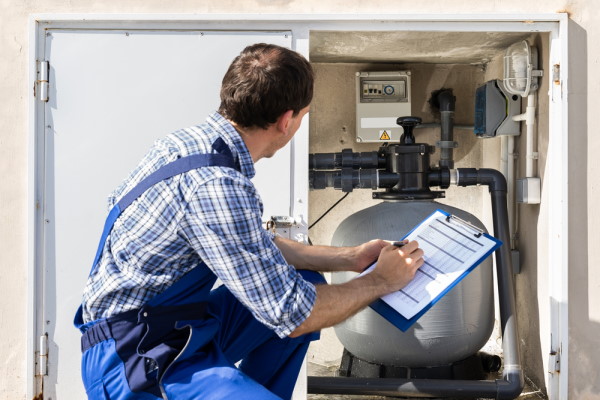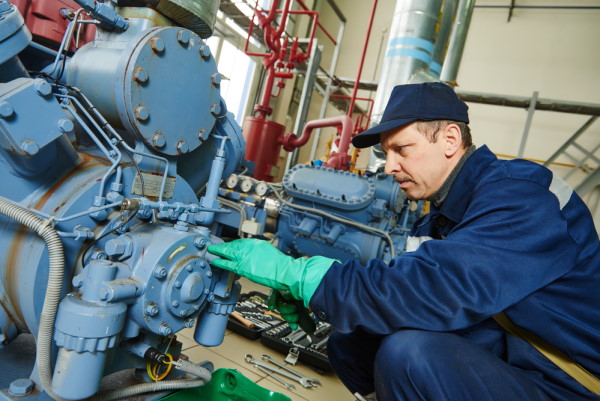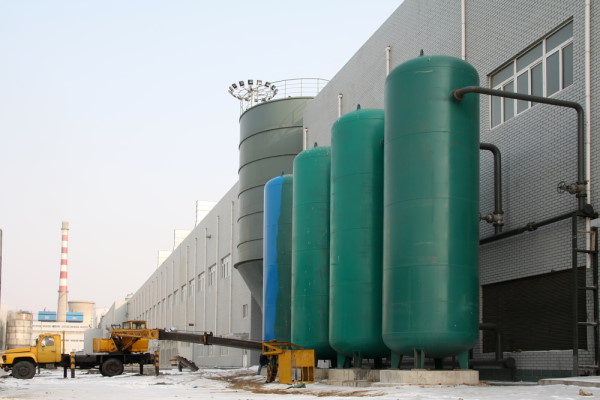
We know that air compressor tanks become weaker with age. Where is the danger point that indicates a tank should be taken out of service?
Larger air compressor tanks have more restrictive testing requirements. Additionally, some states and some use types may have higher standards for testing and certifications.
Do I Need A Permit For My Air Compressor?
If your air tanks are over 125 gallons or have a maximum working air pressure over 250PSI, they will likely need to be inspected and certified.
All air compressor tanks are tested by the manufacturer and are affixed with a stamped certification tag that includes the tank rating. Future certifications are dictated by the air receiver tank size. For example, in the state of California, air compressors over 125 Gallons must be certified and given an updated permit by the Pressure Vessels Unit. New York requires all compressors over 100 PSI to receive a permit. However, most jurisdictions do not require inspection of units under 250 PSI.
According to the Missouri Fire Marshall, 10% of their inspected pressurized containers fail inspection every year.

Most small shop compressors are never recertified once they leave the factory, and are discarded at the end of the compressor motor’s lifespan.
Over time, water in the base of the tank can cause rust that weakens the sidewalls. Ultimately, if left long enough, it can lead to a tank explosion.
See Related: How To Drain An Air Compressor
If you are re-using a small compressor tank, it may be worthwhile to pursue recertification. However, finding a certified technician can be difficult.
Certification of large air receiver tanks is generally carried out by the Pressure Vessels Unit as a subsidiary of your state’s Fire Marshall or Industrial Relations board.
Normally these are Biennial inspections, occurring every other year. These inspections also cover the safety valves, control boards, and drains to ensure normal operation.
Why Is Tank Testing Required?
Moisture, dirt, and compressor lubricants lead to condensate buildup inside the compressor. These, in turn, can cause corrosion along the seams which can lead to premature failure.
Types Of Air Tank Certifications
There are 3 major types of air tank certification standards, the OSHA standards, NBBI and ASME:
Occupational Safe And Health Administration (OSHA)
OSHA is the American governing body of workforce safety. They publish standards that the state inspectors enforce. The section of standards 1910.169 covers air compressor tanks.
American Society of Mechanical Engineers (ASME)
Reading through the OSHA standards, you will notice the frequent references to the A.S.M.E. Boiler and Pressure Vessel Code Section VIII. This section governs the construction of air receivers and provides guidance for testing new air tanks.
The ASME guidelines also cover ancillary topics such as safety shut-off switches for an overheating reciprocating air compressor to prevent fires from an overheating malfunction.
Not all residential tanks are required to have ASME certification. Purchasing a compressed air system with this certificate indicates higher quality construction.
National Board Of Boiler and Pressure Tank Inspectors (NBBI)
The National Board of Boiler and Pressure Tank Inspectors provide the requisite training to equip the inspectors who enforce the above standards. They have two training tracks, the Inservice Inspector Commission (IS) or the Authorized Inspector Commission (AI).
Compressed Air Tank Inspection Requirements
Not only does the tank need to be inspected, but all of the safety mechanisms also must be inspected, including:
- Pressure Relief Devices
- Internal Corrosion Inspection
- External Impact Damage
- Pressure discharge pipes
- High-Pressure Hose Connections
Tank weakness, cracks in the tank, and carbon build-up on any of the piping are the main items tank testing inspects for. The safety valve must be set so that the tank does not exceed the maximum working pressure rating.
Visual Inspection
Tanks should be regularly looked at for rust spots and external damage. A portable air compressor will rust from the inside-out and needs an internal inspection. Inspection openings can be created by removing the drain plug at the bottom, or by removing the compressor outlet line to provide enough room to run a camera inside the tank for a visual inspection. Visual inspections will only detect the most obvious damage.
Hydrostatic Compressed Tank Testing
Hydrostatic testing involves filling a tank with water and then pressurizing it. A pressure gauge capable of up to 2 times the test pressure is used to control the test.
This is considered a safer pressure test than using compressed air to test a tank. Water cannot rapidly expand and therefore has a lower risk of explosion. With this method, pressurized water is applied to the tank and any leaks are revealed as a stream of water. These areas can then be marked and sent back for welding repairs.
Periodic hydrostatic testing is the gold standard for tank safety.
Ultrasonic Tank Testing
Ultrasonic tank testing uses ultrasonic waves to check the thickness of the wall on an air receiver. This is often performed as the first line of evaluation. If a tank fails this test, it is then sent for Hydrostatic Tank Testing.
Maximum Allowable Working Pressure
The maximum allowable working pressure (MAWP) of a compressor control valve is the maximum pressure that can flow without damaging the component.
If the MAWP is exceeded, the rings and gaskets may fail prematurely. This is sometimes called the Maximum Allowable Operating Pressure (MAOP).
How often should an air compressor tank be inspected?
Most residential compressor tanks will work off of the indefinite permit that is offered by the manufacturer. Industrial Applications that require a renewed inspection will generally require biennial inspections or even once every 3 years.
Do air compressor tanks expire?
You can always check the manufacturer’s stamp on the compressor, but there is no set expiration for air tanks. Campbell Hausfeld has been quoted as suggesting a 15-year expiration, but most of us know air compressors still in service that are twice as old.
Provided there are no pinhole links, a tank that is regularly drained to remove moisture should last for decades.
Who Performs Tank Testing
If your tank is too small to be inspected by your state’s pressure vessel inspection agency, you can often have luck by reaching out to a local welding supply company or a fire equipment suppression company.
Both of these companies are required to test pressurized devices and will have the testing capabilities you need.
Additionally, the ASME provides a list of certified testing facilities you can reach out to.
Can Air Receivers Be Stored Outdoors?

Factory owners are always looking for ways to capitalize on precious internal factory space. In warmer climates, tanks are stored near the main building in a small, well-ventilated shed-type structure. This has the advantage of eliminating an additional heat load from inside the shop.
However, compressors do not work as well when used in an environment below 40 degrees. Often the compressor will be kept inside the factory, while pressurized tanks are external.
 Skip to content
Skip to content

